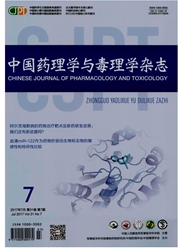

 中文摘要:
中文摘要:
目的探讨低剂量甲醛长期染毒对永生化人支气管上皮细胞16HBE癌症相关基因启动子区甲基化水平的影响。方法 16HBE细胞每周染毒甲醛10μmol·L-1 24h,连续24周,分别于染毒3,6,9,12,15,18,21和24周提取RNA或DNA,应用DNA甲基化相关酶消化结合荧光定量PCR的方法观察24个癌症相关基因启动子区甲基化水平的变化;应用荧光定量PCR的方法观察染毒对亚甲基四氢叶酸还原酶基因(MTHFR)和成对盒基因(PAX5)基因表达的时间-效应关系。结果与正常对照组16HBE细胞相比,甲醛染毒细胞4个基因甲基化水平显著改变,2个基因甲基化程度升高,2个基因甲基化程度降低;而在阳性对照人非小细胞癌上皮细胞A549细胞中有9个基因甲基化水平发生显著变化,其中3个基因甲基化水平升高,6个基因甲基化水平降低;甲醛染毒16HBE细胞和A549细胞MTHFR基因均发生高甲基化改变,PAX5基因均出现低甲基化改变。与正常对照组相比,甲醛染毒24周的细胞中,MTHFR基因启动子区甲基化水平升高,非甲基化DNA含量降低58.2%,而PAX5基因启动子区甲基化水平降低,非甲基化DNA含量升高27.1%;随着甲醛染毒时间延长,MTHFR基因表达逐渐降低,而PAX5基因表达逐渐升高。结论低剂量甲醛长期染毒可以使MTHFR基因和PAX5基因启动子区甲基化水平异常,进而引起基因表达水平改变。
 英文摘要:
英文摘要:
OBJECTIVE To explore the effect of long term contamination of low dose formaldehyde on the methylation pattern of the promoter of 24 cancer related genes in 16HBE cells.METHODS The 16HBE cells were taken as objects and A549 cells as positive control.The method that combined the digestion of DNA methylation related enzymes and real-time PCR was applied to detect the methylation status of the promoters of the 24 cancer related genes.Real-time PCR was used to observe the expression levels of MTHFR and PAX5 genes.RESULTS Compared with normal 16HBE cells,the methylation pattern of 4 out of 24 genes′ changed remarkably in formaldehyde treated 16HBE cells,two were hypermethylated and two were hypomethylated.In A549 cells,the methylation pattern of 9 out of 24 genes′ changed remarkably,3 of them were hypermethylated and 6 of them were hypomethylated.MTHFR gene was hypermethylated in both formaldehyde treated 16HBE cells and A549 cells,and PAX5 gene was hypomethylated in both cells.In the formaldehyde treated 16HBE cells,the non-methylated DNA of MTHFR gene decreased by 58.2%,while the non-methylated DNA of PAX5 gene increased by 27.1%.Along with the contamination of low dose formaldehyde the mRNA expression level of MTHFR decreased while the mRNA expression level of PAX5 increased gradually.CONCLUSION The long term contamination of low dose formaldehyde could cause aberrant methylation pattern of MTHFR and PAX5 genes and lead to the mRNA expression level change of the two genes.
 同期刊论文项目
同期刊论文项目
 同项目期刊论文
同项目期刊论文
 The involvement of epigenetic silencing of Foxa2 in cellular replicative and premature senescence in
The involvement of epigenetic silencing of Foxa2 in cellular replicative and premature senescence in 期刊信息
期刊信息
